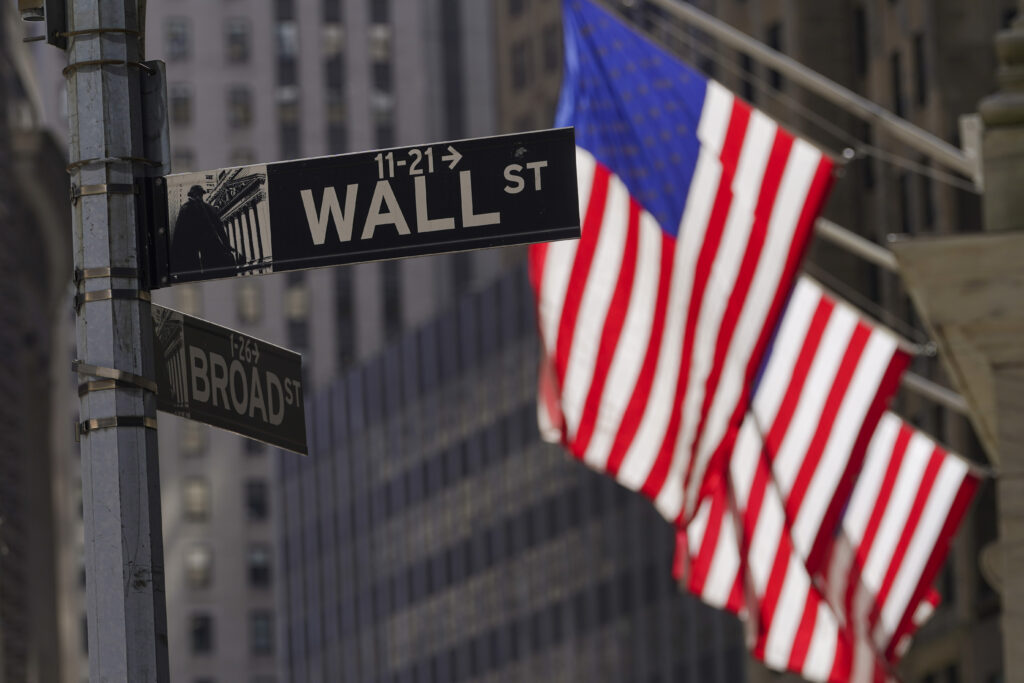Meta Platforms Inc is a Wall Street darling again. The company’s shares continued their winning streak on Thursday, surging nearly 15.1% after Meta’s focus on AI and cost-cutting cheered investors whose enthusiasm has already helped the social media behemoth nearly double in value this year. Meta is set to add around $75 billion to its market valuation and overtake Nvidia Corp as the best-performing stock in the S&P 500 index on a year-to-date basis, if gains hold. The Associated Press has the story:
Surge for Meta powers Wall Street stock higher
Newslooks- NEW YORK (AP)
Wall Street is rising Thursday after Meta Platforms became the latest Big Tech company to blow past profit expectations and reports painted a mixed picture of the U.S. economy.
The S&P 500 was 0.7% higher in early trading and on pace for its first gain in three days. The Dow Jones Industrial Average was up 181 points, or 0.5%, at 33,483, as of 9:50 a.m. Eastern time, while the Nasdaq composite was leading the market with a 1% gain.
Facebook’s parent company was doing some of the heaviest lifting, and it jumped 15.1%. Not only did Meta beat analysts’ estimates for profit during the first three months of the year, it also gave a forecast for revenue that topped expectations.

The majority of companies have been beating profit forecasts so far this reporting season. Hasbro climbed 9.8%, and eBay rose 2.4% after they also topped Wall Street’s estimates. But expectations were quite low coming into this reporting season because of still-high inflation, much higher interest rates and a slowing economy.
A report on Thursday gave the first indication of just how much the U.S. economy is slowing: down to an estimated 1.1% growth at an annual rate during the first three months of 2023 from 2.6% at the end of last year. That was a worse slowdown than expected, but the economy may be stronger than it looks.
Underneath the surface, the report showed strength at the economy’s core, with growth in spending by consumers and other areas accelerating. Much of the weakness was related to businesses thinning out inventories. A separate report also showed that fewer workers applied for unemployment benefits last week, raising hope that the job market may be remaining resilient as other areas slow.
“In our view, pulled all together, the conflicting data signals to us that we are in the ‘bend, not break’ phase of the cycle” for the economy, said Alexandra Wilson-Elizondo, co-head of portfolio management for multi asset solutions at Goldman Sachs Asset Management.
As a whole, investors took the data to mean the Federal Reserve will see the economy is still strong enough to handle another hike to interest rates at its next meeting next week.
The Fed has been raising rates at a furious pace since early last year, up to the highest level since 2007 from its record low. It’s doing so in hopes of getting the nation’s high inflation under control, but high rates do that by slowing the entire economy and hurting prices for investments.
Treasury yields jumped immediately after the economic reports hit Wall Street as traders upped their forecasts for the Fed and rates.
The yield on the 10-year Treasury rose to 3.49% from 3.45% late Wednesday. It helps set rates for mortgages and other important loans.
The two-year yield, which moves more on expectations for the Fed, rose more aggressively, up to 4.03% from 3.95%.
High rates have hit some areas of the economy particularly hard, including the housing and manufacturing industries. Banks have also come under pressure amid fears that scared customers may suddenly pull out all their deposits at once.
The hunt has been on for potential weak links, and Wall Street’s spotlight has been particularly harsh on First Republic Bank. Its stock has more than halved this week after it gave details about how much in deposits its customers pulled out following the second- and third-largest U.S. bank failures in history last month.
Its stock steadied a bit Thursday, rising 6.2%.
The larger worry is that the banking industry’s struggles could lead to a pullback in lending across the economy. That in turn could tighten the brakes even further, acting almost like another hike to interest rates.
That has many investors preparing for a possible recession this year, which could mean further hits to corporate profits. It’s also why investors have been paying just as much, if not more, attention to what companies say about their upcoming results as what they actually did in the past three months.
Caterpillar, which is considered a bellwether for the global economy, fell 3.5% despite reporting stronger profit and revenue for the latest quarter than expected. Analysts pointed to concerns that its profitability may have maxed out. It also benefited from a bigger-than-expected buildup in dealer inventories, which may pressure future sales.
In markets overseas, stock indexes were mixed in Europe and modestly higher across much of Asia.
Japan’s Nikkei 225 rose 0.2% as the Bank of Japan began a two-day monetary policy meeting under its new governor, Kazuo Ueda. No immediate change is expected to the nation’s super-easy monetary policy.







